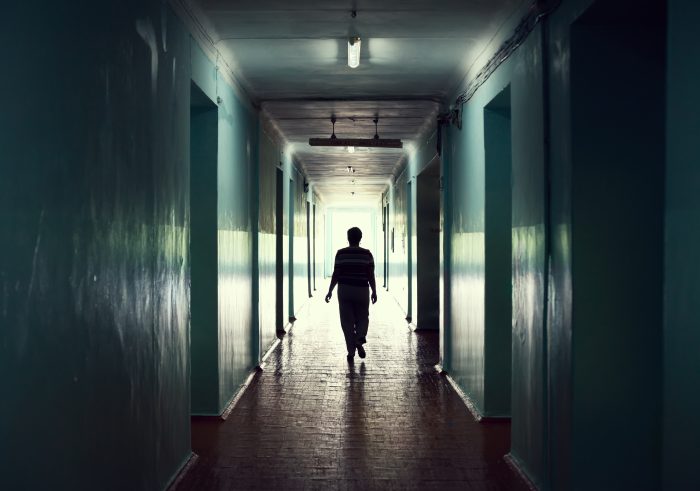Live Action News recently reported on the February 4, 2017, death of Keisha Marie Atkins, from her abortion procedure. She was at least six months pregnant. Operation Rescue believes the autopsy report blaming her death on pregnancy is a “whitewash” to cover up a botched abortion.
An abortion carries risks at any point in pregnancy. But this is something many pro-abortion researchers aren’t willing to admit. Abortion can carry long-term effects on a woman’s health, and ultimately, her life.
Late-term abortions, particularly, are very involved and dangerous. Methods are explained in the Abortion Procedures series, featuring former abortionist Dr. Anthony Levatino. Supporters of late-term abortions claim they are only committed for the health or life of the mother or child, which is rarely the case. Watch Dr. Levatino explain the late-term procedure (past 25 weeks gestation) in this video:
Americans United for Life notes that the risks of an abortion are numerous, “including hemorrhage, infections, organ damage, future pre-term births, placenta previa, mental health problems (including suicide), and death—are greatest when abortion occurs later in pregnancy.”
Priscilla K. Coleman explains that “post-abortion physical complications at various gestational points are primarily the result of incomplete evacuation of the uterus, uterine atony, infection, and instrumental injury.”
Second trimester abortions have a medical risk of at least 50 percent. Earlier in pregnancy it is 3-6 percent, AUL notes.
Abortion-related deaths from 1988-1997 had a rate of 76.6 deaths per 100,000 abortions for those at or after 21 weeks, from hemorrhage, infection, embolism, anesthesia complication, and cardiac and cerebrovascular events.
Women having late-term abortions are likely to be younger. Those under 20 are also more likely to have subsequent abortions, facing risks again.
Coleman says, “there are reasons to believe that there is significant underreporting of abortion complications.” Coleman also notes that “[t]here is an appallingly small published literature on the physical and psychological consequences of late-term abortion…” but “all the published research to date… has consistently shown that late-term abortion poses serious risks to women’s mental and physical health and no published studies have established health benefits of the procedures.”
The risks are known but are downplayed and not widely publicized. Livestrong and the American Pregnancy Association even acknowledge these risks.
Other women besides Keisha Atkins have died from late-term abortions, all 30 or younger at the time of their abortions. Here are seven:
- Jamie Lee Morales – July 9, 2016
Morales was 30 years old when she died from her 23-week abortion. Her child was disposed of in a garbage bag outside Liberty Women’s Health in Queens, New York.
Abortionist Robert Rho allegedly nicked her cervix, which “damaged her vaginal wall, and opened a cut in an artery that goes through the uterus.” Morales was bleeding, needed a second operation, and collapsed, but was sent home. She didn’t make it to her sister’s house, but collapsed and died at the hospital that night. Rho was charged in October 2016, and could face 15 years in prison for second-degree murder and for failing to care for his patient.
Rho’s lawyer defended his client’s reputation, but his attempts to do so reflected the cavalier way abortionists treat women.
- Christina Stile – March 29, 2015
Stile had an abortion the day after turning 18, on July 1, 1993, which left her in a vegetative state until she died at age 39 years old. The abortion was committed by Ronald Kuseski, at the Mayfair Women’s Clinic in Aurora, Colorado.
Cemetery of Choice explains that Kuseski was “not an anesthesiologist,” but “had administered sedatives to Christi through her IV. After the abortion, he looked up to find Christi pale, with bluish lips, and no pulse or respiration. Her heart had stopped. Paramedics were summoned, who managed to restore Christi’s pulse and respiration before rushing her to the hospital.”
CoC also notes that there was “no record of Christi’s vital signs being recorded during the abortion” and whether or not the facility had a crash cart is in dispute. CoC says, “The medical board investigation found that Kuseski didn’t have pulse oximetry equipment in place for Christi’s abortion. Kuseski denied any misconduct,” but was sent a “Letter of Admonition… to adhere to ‘Anesthesia Monitoring Guidelines’ in the future, and to attend CPR and Advanced Cardiac Life Support training.”
Stile’s death provides a rebuttal to those who dismiss the long-term dangers of abortion.
- Lakisha Wilson – March 28, 2014

Photo via Operation Rescue
A lack of proper care can contribute to death, as it did with Lakisha Wilson. She died at age 22, one week after her abortion. The facility, Preterm, dated the pregnancy at 19 weeks and 4 days. It was later revealed Wilson was closer to 23 weeks. It is unknown if abortionist Lisa Perriera lied about the gestation so the abortion would appear legal.
The facility also failed to properly monitor Wilson, which may be what led to the extent of bleeding and hemorrhage followed by cardiopulmonary arrest, causing her death. Wilson had suffered uterine atony, where the uterus fails to contract properly. Operation Rescue noted:
Depressed respiration caused by sedation administered by abortion clinic personnel may have contributed to the lack of oxygen Wilson’s body received, compounding the medical crisis she experienced due to blood loss.
The delay in calling 911 also led to “subsequent fatal brain damage.” The facility had a malfunctioning and cramped elevator, further delaying proper intubation of Wilson when paramedics arrived.
Operation Rescue obtained 911 recordings of two more women injured, from 2012 and 2015, when the elevator also malfunctioned. Another woman was hospitalized in July 2017.
A study from 1983 discussed 24 preventable abortion deaths, in which they all had a“[l]ack of adequate postoperative monitoring or treatment of hemorrhagic shock.”
- Jennifer Morbelli – February 7, 2013

Jennifer Morbelli, one of Carhart’s victims (left)
Jennifer Morbelli’s decision to have a 33-week abortion led her to LeRoy Carhart’s facility in Germantown, Maryland. Late-term abortionist Carhart was a colleague of the now-deceased late-term abortionist George Tiller. Until recently closing, Carhart’s facility was one of a handful still committing abortions so late.
Morbelli was described by pro-life witnesses as “pale and weak” during the process. Carhart told patients to contact him rather than go to the emergency room. Morbelli had been unable to reach him, unsurprising since the emergency number routed to Carhart’s wife’s horse business.
Morbelli was taken to the hospital at around 5:00am and died at 9:30am, after internal bleeding to the abdominal cavity.
Morbelli was not the first… Carhart has injured others.
- Tonya Reaves – July 21, 2012

Tonya Reaves died from abortion at Planned Parenthood
At age 24, Reaves left behind her fiancé and young son after bleeding to death from her incomplete 16-week abortion at Planned Parenthood in Chicago. Abortionist Mandy Gittler was retained there, and went on to work at a Planned Parenthood in Michigan, despite negligence and lack of license.
Had the facility properly cared for Reaves, she might still be alive.
The abortion was performed at 11:00 am. It was hours later before Reaves got treatment at a hospital, as she was not transported by ambulance until 4:30pm. It was later reported Planned Parenthood was not even the one to call 911.
Reaves died at 11:20 pm, approximately 12 hours following the abortion.
Live Action News later reported that “the Planned Parenthood clinic where Reaves’ abortion was performed was listed as not performing surgical abortions…. [C]ould this have had anything to do with their bungling of Reaves’ abortion?”
Unbelievably, Reaves’ death was ruled an “accident,” but her death was preventable.
- Christin Gilbert – January 13, 2005

Photo credit: justiceforchristin.com
Christin Gilbert was 19 when she died from her 28-week abortion. Justice for Christin noted that due to “the severity of her Down syndrome,” Christin could not have consented to sex, but nobody was found responsible.
Justice for Christin describes her as “a joy to be around.”
Christin’s mother became suspicious of her pregnancy after helping her bathe, and Gilbert’s pregnancy was confirmed in January 2005.
The Justice for Christin page mentions that Christin “was brought by her family to Women’s Health Care Services, (WHCS), in Wichita, Kansas, for a third-trimester abortion at 28 weeks of pregnancy…” but that Christin “never would have chosen abortion for her baby, leading to concerns that Christin was not made to understand what was about to happen. Christin was likely, according to [an undisclosed] family member, a victim of an illegal forced abortion.”
Abortionist Kristin Neuhaus, who has frequently faced disciplinary action, purported to be a “psychologist” to sign off on the abortion. LeRoy Carhart committed the abortion.
Gilbert delivered her deceased baby in the family’s van and was sent to a hotel room to recover, where she worsened. Carhart never responded nor saw her at the hotel.
Live Action News reported about Gilbert’s nightmarish final moments:
Clinic staff called 911, but refused to tell dispatchers the nature of the emergency, which caused EMS personnel to assume there was no urgency. When paramedics arrived, Christin was lying in “huge amounts” of blood and fluid. Carhart was on top of Christin, physically trying to force fluids from her stomach. Christin eventually died from her injuries.
Carhart is seen in Live Action’s “Inhuman” footage investigating the late-term abortion industry, denying that Gilbert was his patient.
- Tamiia Russell – January 8, 2004
Woman Care of Southfield PC in Lathrup Village, Michigan, has closed, but not before at least three women died from abortions there.
Russell was a 15-year-old statutory rape victim when abortionist Alberto Hodari committed the illegal abortion without parental consent. She was at least six months pregnant.
Despite Russell’s bleeding, the facility told her mother not to take her to the hospital. Her family called an ambulance anyway, but Russell died at the hospital.
With any hope, the site of the procedure which caused Russell’s death will remain closed.







